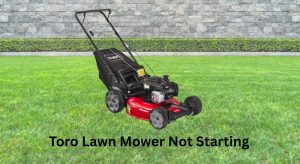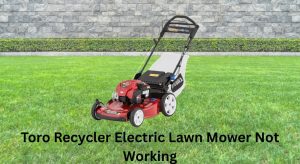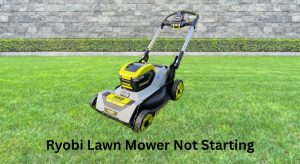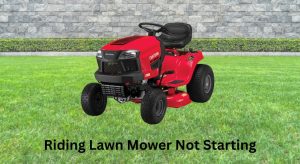When your lawn mower self propel stops working, mowing instantly becomes harder and more time-consuming. The quick fix most people overlook: check and tighten the drive cable at the handle, then clear grass packed around the drive wheels. For many models, a simple cable adjustment and wheel cleaning gets you moving again in minutes.
In this complete guide, you’ll learn every common cause of self-propel failure, step-by-step fixes for belt, cable, and gearbox issues, and how to prevent it from happening again. Whether you have a Honda, Toro, Craftsman, Troy-Bilt, Husqvarna, or other walk-behind mower, you’ll find solutions here to get your self-propel working smoothly today.
Common Causes of Lawn Mower Self Propel Not Working

- Drive cable stretched or disconnected
- Drive belt worn, broken, or off the pulley
- Debris packed in the drive wheels/axle
- Worn wheel gears (ratchet/pawl) or stripped wheel hubs
- Drive pulley or transmission (gearbox) damage
- Incorrect or worn drive wheels/tires
- Low or uneven wheel height settings
- Clutch/engagement lever not pulling fully
- Transmission seized due to lack of lubrication or contamination
- Sheared key on wheel gear (some models)
- Broken drive control spring or return spring
- Loose mounting bolts on transmission or cable bracket
How to Fix a Lawn Mower Self Propel Not Working
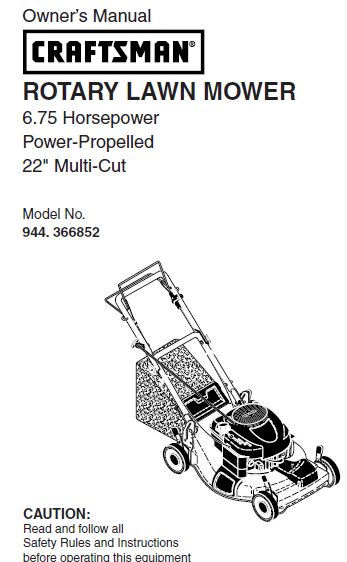
Important: Always remove the spark plug wire and tip the mower with carburetor/air filter side up to prevent fuel/oil leakage. For electric/battery mowers, remove the battery and safety key.
Method 1: Quick Checks and Cable Adjustment (Fastest Fix)
Diagnosing the Issue
- Symptoms: Lever feels loose or doesn’t return, wheels don’t turn when lever pulled, intermittent engagement.
- Tools: Wrench/screwdriver, pliers, gloves, safety glasses.
Fix Steps
- Disconnect power:
– Gas: Remove spark plug wire.
– Battery/electric: Remove battery/safety key or unplug cord. - Inspect the drive cable:
– Follow the cable from the handle to the transmission.
– Check for frayed cable, loose outer sheath, or detached end. - Adjust cable tension:
– Most mowers have an inline adjuster or a bracket at the handle.
– Loosen the lock nut and turn the adjuster to shorten the cable sheath, increasing tension.
– Aim for 1/8–1/4 inch (3–6 mm) of free play at the handle before engagement. - Check spring and lever:
– Ensure the return spring is attached and intact near the transmission.
– Tighten any loose brackets on the handle. - Test the wheels:
– With the mower off the ground, pull the lever and rotate the wheels forward by hand. They should lock/drive when engaged and freewheel when released.
Testing
Reconnect power and drive on flat grass. If the wheels now pull consistently, you’ve fixed it. If engagement is weak or noisy, continue to Method 2.
Method 2: Clear Wheel Debris and Inspect Wheel Gears
Diagnosing the Issue
- Symptoms: Clicking, grinding, or one wheel doesn’t pull. Mower feels like it drags or engages only downhill. Heavy grass buildup near wheels.
Fix Steps
- Disconnect power and tilt mower safely.
- Remove drive wheels:
– Pop off hub caps (if present).
– Remove the wheel nut/bolt and slide the wheel off the axle. - Clean thoroughly:
– Remove compacted grass, mud, and string from around the axle, dust caps, and gears.
– Clean the gear teeth in the wheel with a brush. - Inspect parts:
– Look for rounded/stripped wheel gear teeth.
– Check pawl/ratchet mechanism (if used) for wear or broken spring.
– Ensure dust seals are intact. - Light lubrication:
– Apply a small amount of dry lube or light machine oil to the axle and pawl pivots.
– Avoid greasing plastic gears heavily—it collects debris and accelerates wear. - Reassemble:
– Refit washers/spacers in the original order.
– Torque wheel nut snugly but don’t overtighten plastic wheels.
Testing
Spin each wheel forward and backward by hand:
– Forward spin should engage gear on the drive side.
– Reverse should freewheel on most models.
If a wheel still freewheels under load or clicks constantly, replace the wheel with gear or the internal ratchet kit.
Method 3: Inspect and Replace the Drive Belt
Diagnosing the Issue
- Symptoms: Engine runs and blade spins, but mower doesn’t move. Self-propel worked gradually worse over time. Squealing sound when engaging.
Fix Steps
- Access the belt:
– Remove the blade control bar and deck cover/shroud over the belt area (if equipped).
– Some models require removing the blade and blade adapter to reach the belt. - Check belt condition:
– Look for glazing, cracks, fraying, or stretching.
– Check the belt is routed correctly over engine pulley and transmission pulley. - Replace if worn:
– Use the exact OEM belt size and profile (consult manual or model number; many use V-belts like 3/8″ or 1/2″ profiles).
– Note routing before removal. Take a photo. - Install new belt:
– Fit over the transmission pulley first, then engine pulley.
– Verify belt guides are not rubbing. - Verify pulleys:
– Spin the transmission pulley by hand—it should turn smoothly.
– Ensure the engine drive pulley is clean and aligned.
Testing
Reassemble covers, reconnect power, and test self-propel on pavement first. If it slips under load, recheck belt guides and tension, and confirm you used the correct belt.
Method 4: Transmission and Pulley Service (Advanced)
Diagnosing the Issue
- Symptoms: Loud grinding from the front/rear drive when engaged, belt and cable are good, wheels don’t drive even when lifted. Shaft doesn’t rotate when pulley turns.
Fix Steps
- Inspect drive pulley and key:
– Make sure the pulley is solid on the transmission input shaft; tighten set screws.
– Check for a missing/sheared key on keyed shafts. - Check transmission mounts:
– Tighten loose mounting bolts. Misalignment can cause belt slip and loss of drive. - Service or replace the transmission:
– Some gearboxes are sealed; if noisy or seized, replacement is typical.
– For serviceable units, remove case screws, clean old grease, inspect gears and bushings, and regrease with NLGI #2 lithium grease. - Verify axle bushings and drive keys:
– On models with separate wheel drive gears and keys, replace worn keys/retainers.
Testing
After reassembly, hand-rotate the transmission pulley with the mower lifted. The drive wheels should rotate smoothly without binding. Road test on grass.
Prevention and Maintenance Tips
- Clean under the deck and around the drive wheels after each mow.
- Inspect and adjust the self-propel cable every 25 hours or monthly during peak season.
- Replace the drive belt every 1–2 seasons, or sooner if glazed or cracked.
- Avoid heavy grease on exposed plastic gears—use dry lube or light oil sparingly.
- Keep wheel height even side-to-side to reduce strain on the transmission.
- Store the mower indoors to prevent corrosion of cables and springs.
- Don’t force the mower with the self-propel off in thick grass—this stretches the cable and wears the belt.
Model-Specific Notes

- Honda HRR/HRX: Common cable stretch; quick adjust at the handle. Twin-blade decks pack grass—clean often. Some models use a hydrostatic transmission; if it slips, check belt and pulley first.
- Toro Recycler/Personal Pace: The Personal Pace cable and traction belt are common wear items. Adjust traction knob; replace belt if slow.
- Craftsman/Troy-Bilt: Front-drive models often get debris in the wheel gears; cleaning and new wheels fix most issues. Use OEM belt routing.
- Husqvarna/AYP: Watch for worn drive wheels and belt guides. Check for sheared wheel keys on some rear-drive units.
- Greenworks/EGO/Ryobi battery mowers: Ensure the drive motor connection is secure and the self-propel speed setting is not set to low. Clear debris; some models have a separate drive motor fuse or reset.
Safety Reminders
- Warning: Always disconnect the spark plug or battery before servicing.
- Important: Tip the mower with air filter and carburetor up to avoid flooding.
- Use gloves and eye protection when removing wheels or belts.
- Torque blade bolts to manufacturer spec if removed (commonly 35–60 ft-lb; check manual).
Pro Tips
- Mark belt routing with a paint pen before removal.
- If one wheel pulls and the other doesn’t, swap wheels left-to-right; if the issue follows the wheel, replace that wheel/gear.
- A squeal on engagement usually means belt slip—clean pulleys and replace the belt.
- If the handle lever travel is maxed out, move the cable anchor closer to the pivot to gain more pull.
- After washing, blow-dry wheel gears with compressed air to prevent rust and sticking pawls.
- Check deck edge and chute for buildup—heavy drag can make drive feel weak even if components are fine.
- Keep a spare drive belt and wheel gear kit on hand during the mowing season.
When to Call a Professional
- Persistent grinding or clunking from the transmission after belt and cable replacement.
- Seized transmission pulley or leaking gearbox (on serviceable units).
- Bent drive axle or damaged deck causing pulley misalignment.
- Electric/battery mowers showing error codes or no drive motor response.
- If you’re uncomfortable removing the blade or opening a gearbox.
What to look for in a service provider:
– Experience with your brand/model
– Transparent diagnosis and labor rate (typical labor $60–$100/hr)
– OEM parts availability and warranty on work (30–90 days is common)
Typical costs:
– Cable adjustment: $0–$20 DIY; $40–$80 shop
– New drive belt: $10–$35 part; $80–$150 installed
– Drive wheels: $15–$40 each
– Transmission: $60–$180 part; $150–$300+ installed
Warranty considerations:
– New mowers may have 2–3 year warranties; drive components often covered unless wear-related. Keep receipts and avoid unauthorized modifications.
FAQ
Q: Why does my lawn mower self propel work on pavement but not on grass?
A: On pavement there’s low resistance, so a slipping belt or marginal cable tension may still move the mower. Under load on grass, the belt slips or wheel gears skip. Adjust the cable and replace a glazed belt. Also clean wheel gears and ensure even wheel height.
Q: How tight should the self-propel cable be?
A: Aim for 1/8–1/4 inch of free play at the handle. If you must pull the lever all the way to the handle to get movement, tighten the cable. If the wheels creep at idle without touching the lever, it’s too tight.
Q: Do I need to grease the wheel gears?
A: Use light oil or dry lube sparingly. Heavy grease attracts debris and can accelerate wear. Some sealed wheel hubs don’t require lubrication—follow your manual.
Q: How often should I replace the drive belt?
A: Inspect every 25 hours and replace every 1–2 seasons or at the first sign of glazing, cracks, or stretching. Heat and dust shorten belt life.
Q: My self-propel is slow even after a new belt. What else?
A: Check cable adjustment, wheel gear wear, and pulley alignment. On variable-speed systems (e.g., Personal Pace), check traction cable adjustment. Ensure the deck isn’t dragging in thick buildup.
Q: One wheel locks up when I pull the mower backward. Is that normal?
A: Many drive wheels include a one-way ratchet. If a wheel locks during reverse, the pawl may be stuck with debris or rust. Clean and lightly lube the mechanism. It should freewheel in reverse.
Q: Can I use a non-OEM belt?
A: You can, but OEM belts match the exact length and profile. Off-size belts often slip or ride wrong in the pulleys, causing premature wear and weak drive.
Alternative Solutions
If repeated repairs aren’t holding, consider these options:
| Solution | Pros | Cons | Best For |
|---|---|---|---|
| Rear-wheel drive conversion (new mower) | Better traction on slopes, less front-wheel slip | Higher cost | Hilly or uneven lawns |
| Brushless battery mower with dedicated drive motor | Low maintenance, instant torque, quiet | Battery cost, electronics complexity | Small to medium lawns, light maintenance |
| Professional seasonal service | Reliable, tuned and adjusted | Annual cost | Busy owners, maximizing mower life |
| Self-propel delete (use as push) | No drive complexity, zero drive maintenance | More physical effort | Small, flat lawns |
Get Your Self-Propel Working Again
By now, you have multiple ways to fix a lawn mower self propel not working:
– Adjust and secure the drive cable
– Clean wheels and inspect/replace wheel gears
– Replace a worn or slipping drive belt
– Check pulleys, springs, and transmission alignment
– Service or replace the gearbox if needed
Follow these steps in order—from quick checks to advanced repairs—and you’ll restore smooth, confident self-propel performance. Don’t let a minor belt or cable issue slow you down.
Have you fixed your mower’s self-propel using this guide? Share your model and what worked in the comments to help other readers. Found this helpful? Bookmark it for next time you tune up your mower. With a few tools and 30–90 minutes, your mower will be driving itself again.


